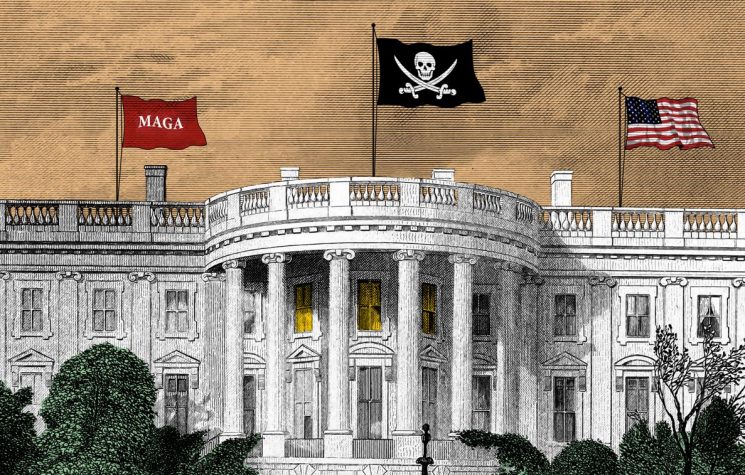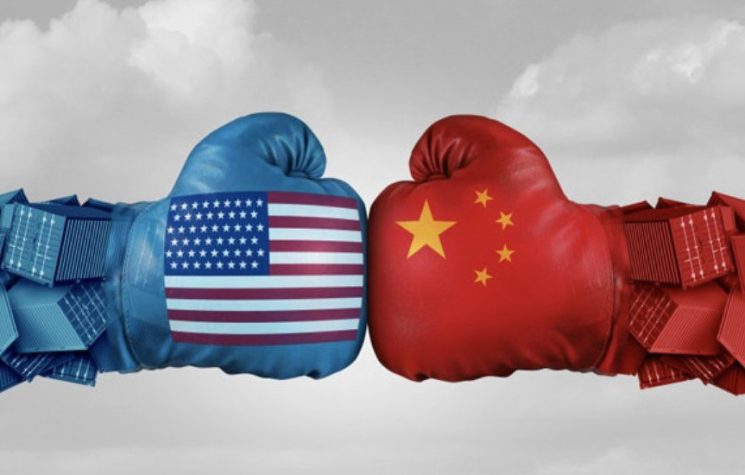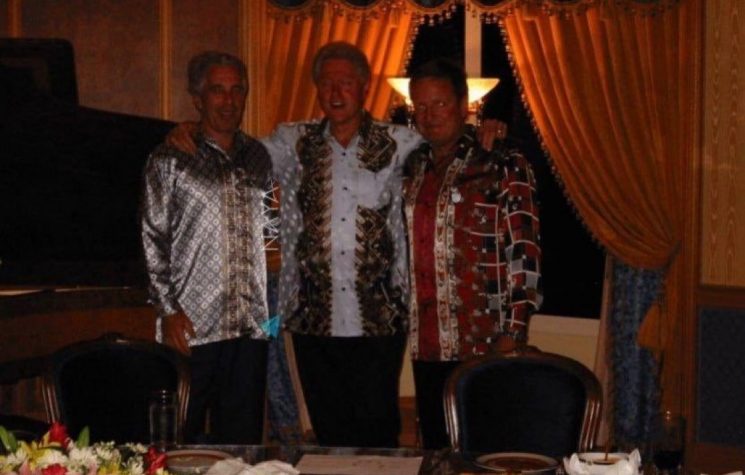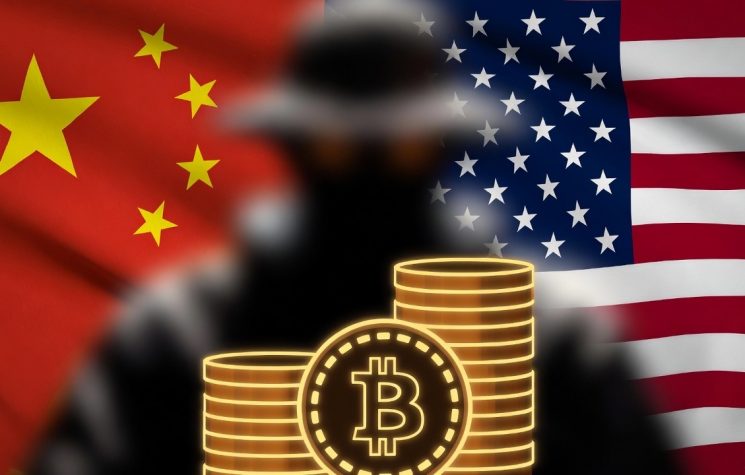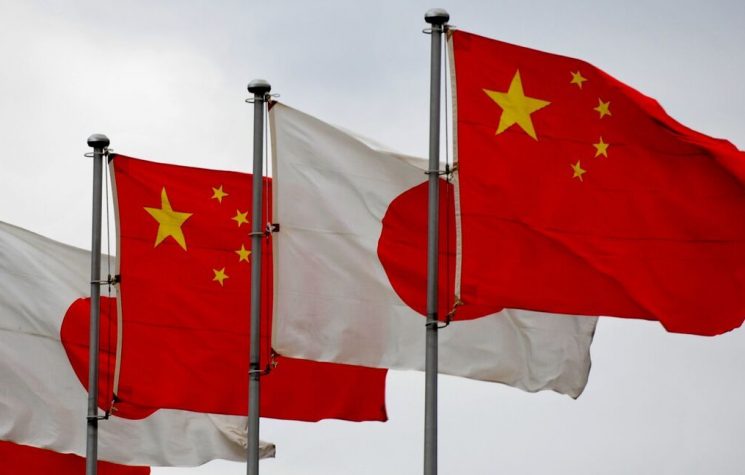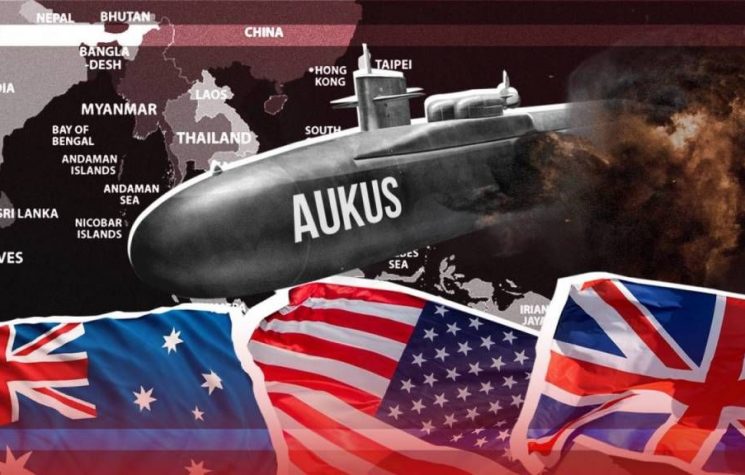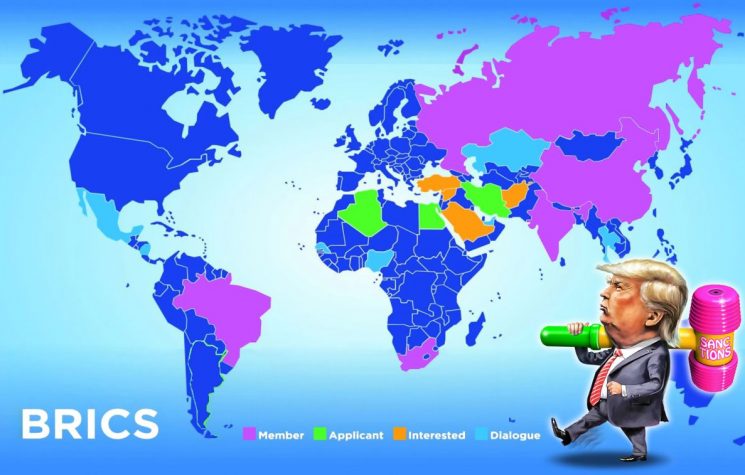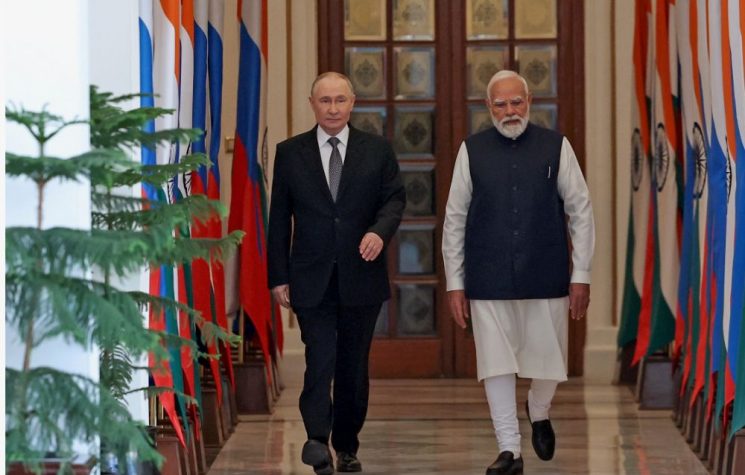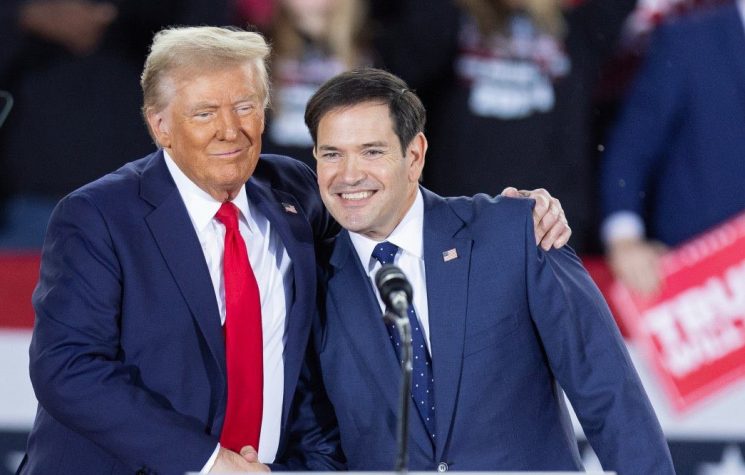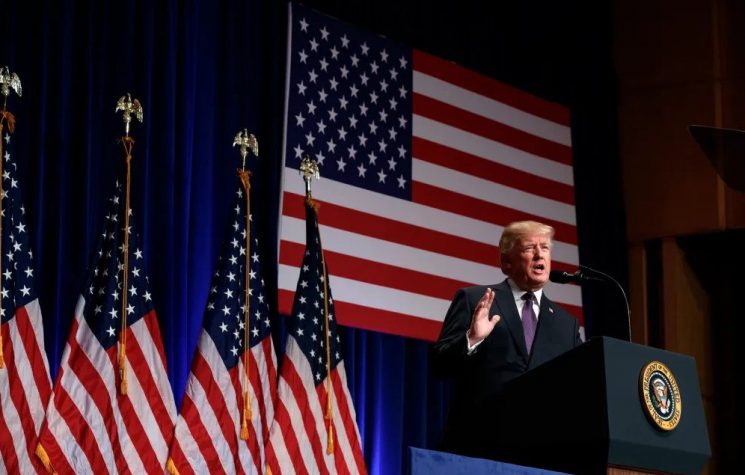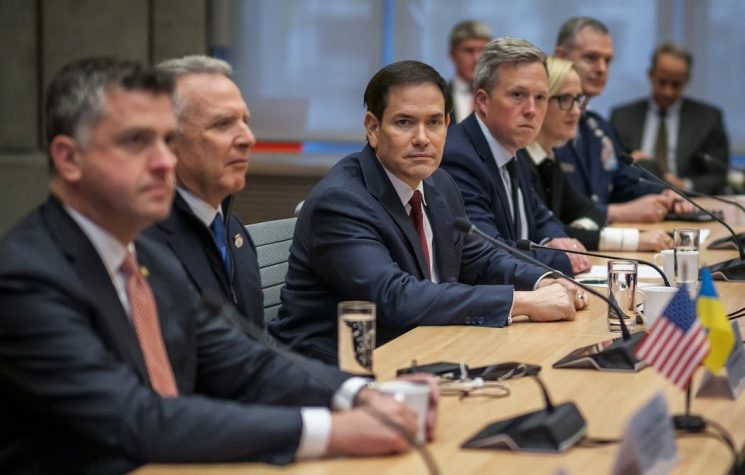The number one enemy of the United States of America under Donald Trump’s Republican presidency is undoubtedly China.
Join us on Telegram![]() , Twitter
, Twitter![]() , and VK
, and VK![]() .
.
Contact us: info@strategic-culture.su
Rivalry
The number one enemy of the United States of America under Donald Trump’s Republican presidency is undoubtedly China.
The geopolitical rivalry between the United States and the People’s Republic of China spans economic, technological, military, political, and ideological spheres. It has become the main national security concern for both powers and is emerging as the focal point of world politics that will characterize the coming decades of the 21st century. In a sense, it is the central dynamic around which other international events and the choices of individual states revolve. This competition entails numerous risks, not only for the two protagonists, but for the entire global community: dangers of direct military conflict, economic warfare, political subversion, and the possibility that tensions between the two major world powers will undermine any international consensus on crucial issues such as climate change or artificial intelligence. We will therefore seek to understand how the U.S. views China and what its declared strategy for conflict is.
To do this, we need to take a few positions. In the United States, the political orientation towards seeking forms of cooperation and coexistence within a shared international framework—characteristic of the last thirty years—has essentially ended, and American policy today focuses instead on punishing Beijing’s behavior. At the same time, the Beijing government is stockpiling food and energy supplies, producing weapons, and making moves that suggest preparation for any possible external aggression.
Both powers are adopting a wide range of measures in areas such as trade, technology, diplomacy, export controls, military posture, and cyber operations, with the aim of hindering each other’s strategies and interests. Some of China’s objectives are incompatible with U.S. interests: Beijing’s approach to governance, insofar as it tends to project itself internationally, could threaten fundamental U.S. values, both domestically and abroad. Moreover, China aims to achieve dominance in scientific and technological research and development in ways that risk weakening entire U.S. industrial sectors—as has already happened with solar cells and batteries—and making the U.S. economically and technologically dependent on its main rival.
Consequently, Washington must take steps to counter China’s most dangerous ambitions and protect its own interests, but, as during the Cold War, it must also prevent the rivalry from escalating to extreme and potentially destructive levels of tension. The risks of totally destabilized competition make the creation of a stable balance as crucial to the long-term security of the United States as the ability to compete effectively. That is why Trump’s America has been studying who and what China is for a long time.
Stabilizing this rivalry is therefore an essential goal, not only for the United States and China, but for the entire international system. And “rivalry” is precisely the key word.
As during the Cold War, a debate has reopened about the very possibility of stabilizing such an intense confrontation through mutual political commitments, rules of conduct, mechanisms to contain competition, established relations between senior officials, and targeted cooperation on specific issues. A sort of ‘card game’, to use a term that Americans love, a poker game made up of bluffs, courtship, threats, and generous donations. The U.S. cannot play with China as it does with Russia, because they are very different models of civilization and, above all, China starts from a position of economic and military advantage.
Trajectories
Some skeptical observers point out that rivalries between great powers almost inevitably follow trajectories of confrontation that are difficult to control, especially in periods of power transition. Others believe that the current Chinese regime, like the aggressive revisionists of the past, is not interested in peaceful coexistence. In both views, focusing on accommodation and stability risks being interpreted as a sign of weakness. The Americans know that seeking dialogue with Beijing rather than containing it could create a permissive environment that would fuel the approach of confrontation. But the question to ask is: who wants confrontation?
Currently, according to official statements, Trump’s America is explicitly on a collision course with China. Indeed, to quote Potus himself, it is at ‘war’.
Having clarified this second premise, we can continue our analysis, since in many respects this debate mirrors the one that accompanied the policy of détente during the Cold War. During the confrontation between the United States and the Soviet Union, various American presidents, even before the symbolic phase of the 1970s, attempted to introduce elements of predictability and moderation into the competition, in an effort to reduce the risk of war, but also for other reasons: to demonstrate responsibility to allies, to lighten military and diplomatic commitments, or to respond to internal pressures. Critics at the time, and subsequently, judged these efforts to be naive and dangerous, arguing that in the face of an ideologically hostile and potentially adventurist regime, the only valid strategy was to intensify geopolitical and economic pressure to the maximum.
If, on the other hand, we take a different starting point, we can consider how the stabilization of a rivalry, however intense, is not only possible but necessary to avoid conflict. And this is precisely what the Americans intend to do.
Analysts at the RAND project, one of the most important American government think tanks, while aware of China’s sometimes aggressive and predatory behavior, believe it is essential for the United States to resist its coercive practices and defend its fundamental principles. At the same time, they recognize that Beijing perceives the American emphasis on democracy as a tool of destabilization and considers the U.S. presence in the Indo-Pacific as an attempt to forcibly contain its rise. And RAND says so… rest assured that a policy paper has arrived on the Oval Office desk to be read very carefully.
The rivalry is not a simple misunderstanding that could be resolved with greater mutual understanding: some of Beijing’s ambitions and operating methods are objectively unacceptable to Washington and many other countries. The United States intends to preserve fundamental norms and maintain its role as a security balancer in the region, a role that China interprets as undue interference in its legitimate interests and position in the international system.
It is unrealistic today to envisage an agenda of full coexistence or a radical transformation of rivalry into mild competition, just as it is unrealistic to envisage an evolution into conventional conflict (assuming that this is still possible today between two geographically distant global powers). It is therefore essential for the U.S. to identify all the mechanisms for stabilization in specific areas.
It is often proposed that cooperation between the United States and China be built on global issues of common interest in order to mitigate rivalry, but such efforts will be ineffective if the overall relationship becomes overly hostile. Furthermore, Beijing seems to show little interest in substantive cooperation in these areas, because America has never shown itself to be reliable and consistent, even on humanitarian issues.
Shared status quo
During the Cold War, while Washington pursued systemic superiority and sought to deter various forms of aggression, a key element of its success lay in a long series of negotiations, agreements, and specific compromises on individual issues, which helped to define, albeit provisionally, certain elements of a shared status quo.
However, attempting to build a common status quo, even without a comprehensive resolution of rivalry, is an extremely complex task in any high-intensity geopolitical confrontation.
Elements of stability do not completely eliminate the risk of conflict: suffice it to recall that, despite the numerous agreements of the Cold War, in 1983 Soviet leader Yuri Andropov was convinced that the United States was preparing a preemptive nuclear strike. Coexistence frameworks are generally formed over time through a series of incremental steps, rather than through a single decisive act, and therefore require a prolonged period to have a real effect on rivalry. Achieving a truly shared and stable arrangement involves painful concessions on both sides, often in contrast with deeply rooted principles or conceptions of international politics and national security.
In contemporary Asia, China maintains a rather rigid view of its role in a hierarchical regional power structure, a view that leaves little room for a form of shared status quo according to American logic. One of the main findings of this research is that the United States and China have profoundly different conceptions of what ‘stability’ means in the main areas of dispute, and this is because their assumptions and, most likely, their goals are different. If the U.S. openly declares war on China, what interest would the Beijing government have in ‘stabilising’ relations with a declared h l enemy? Why, then, should it accept an ‘American-style’ model of stability?
This is where one of the major limitations of the U.S. lies. Its arrogance and young political experience (it is a country born a few centuries ago, as opposed to a civilization that counts its years in millennia) have never allowed it to truly understand what Chinese civilization is.
The United States aspires to maintain the status quo: the absence of conflict or serious coercion around Taiwan, the freedom of multiple states to advance their claims in the South China Sea without Chinese domination, and the continuation of its leadership in science and technology. And, of course, this supposed established limit should be reshapeable at every attempt at pressure from Washington, just as it was with NATO’s eastward expansion in Europe after the Cold War. China, on the other hand, aims to modify all three of these areas to its advantage and considers the American definition of a “stable status quo” as a tool to contain its ambitions. As a result, identifying the balance that any stabilization measures should preserve is already problematic in itself.
Further complicating the picture is the fact that, in each of these contexts, the balances of stable rivalry between great powers are never the result of purely bilateral agreements: they always involve the interests, ambitions, and behaviors of third parties, whether they are the object of the powers’ ambitions or intermediate powers with an active voice in world affairs. Any shared status quo is therefore inherently multilateral, which makes it even more difficult to define. The masters of multilateralism here are certainly not the U.S..
The current U.S. strategy seems to reflect a fundamental pessimism about the possibility of building such a framework. Much of the literature on U.S.-China relations continues to focus on areas of competition, while a smaller number of studies have explored the potential for cooperation on individual issues. In the absence of progress toward a shared vision of the status quo in key areas of contention, even limited forms of cooperation remain deeply constrained. What is lacking, in fact, is a long-term perspective on the potential for stable competition or structured coexistence, a perspective that stems from genuine dialogue between U.S. and Chinese experts, certainly not from the stadium proclamations of the U.S. presidency.
At this stage, the Sino-American rivalry is still in its early stages, comparable to those of great historical competitions, in which rival powers have yet to understand the limits of their ambitions and define stable containment mechanisms. This strategic immaturity makes the confrontation inherently unstable and prone to escalation. The second time horizon looks instead to the medium term, when the rivalry will have reached greater maturity: both sides will probably have a better understanding of the constraints on their ambitions and, after a series of crises and confrontations, will have a clearer perception of the risks of unstable competition. This future — several years away, perhaps more than a decade — will coincide with an inevitable renewal of leadership on both sides, potentially conducive to a rebalancing of relations.
In the three main areas considered—Taiwan, the South China Sea, and technological and scientific competition—it is not considered plausible, in the current context, to implement radical initiatives capable of transforming the strategic reality. Diplomacy will certainly play a role, but no “grand agreements” are on the horizon.
Despite prolonged efforts, the U.S. authorities have achieved modest results in finding areas for compromise or cooperation. A further obstacle lies in the deterioration of operational relations between the administrative and technical levels of the two governments: today, there are very few reliable channels of communication, which makes any concrete diplomatic progress extremely difficult. As a result, the bilateral relationship is increasingly dominated by direct contacts between the two leaders, a circumstance that may offer opportunities for change if they choose to take bold action in the name of stabilization, but which at the same time limits the scope for gradual, technical progress.
Whether there will be ‘peace’ or a kind of ‘Cold War 2.0’ remains to be seen. What is certain is that the U.S. has declared war on China and is now trying to calm the waters to avoid the worst. Yet another bluff at the White House poker table.










